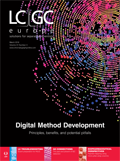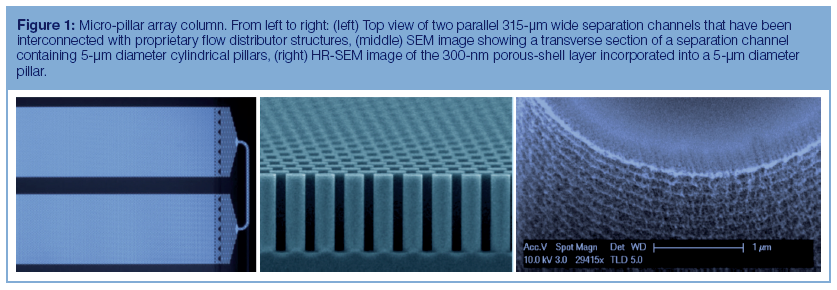Supplementary Appendix 2 to A Practical Approach to Modelling of Reversed-Phase Liquid Chromatographic Separations: Advantages, Principles, and Possible Pitfalls
LCGC Europe
This information is supplementary to the article “A Practical Approach to Modelling of Reversed-Phase Liquid Chromatographic Separations: Advantages, Principles, and Possible Pitfalls” that was published in the March 2018 LCGC Europe issue.
Flow diagram for modelling based on the manual approach
Optional determination of Vm Vd, ECBB and confirm linearity of gradient profile
âº
Select appropriate samples (that is, forced degradation, mother liquors etc.)
âº
Select suitable retention model (for example, log(k )= q1 + q2 F + q3 F2.)
âº
Select appropriate input experiments (tG, T etc.)
âº
Write methods and sequence (allowing sufficient time to equilibrate the new conditions)
âº
Collect input data for fitting and evaluation of models (typically performed overnight)
âº
Perform peak assignment / tracking (using MS, UV DAD, or peak areas), determine peak area, width, and asymmetry
âº
Produce Excel tables for each input experiment, copy, and paste into retention software input section
âº
Enter chromatographic conditions used
âº
Combine each individual input run into one large combined table
âº
Transfer input data to modelling software and fit models
âº
Evaluate resolution as a function of the operating variable examined (that is, gradient shape and T)
âº
Establish operational parameters fit for purpose (that is, identify robust conditions)
âº
Collection of data for confirmation of optimal conditions
âº
Optional in silico evaluation of other column formats, particle size, and flow

New Method Explored for the Detection of CECs in Crops Irrigated with Contaminated Water
April 30th 2025This new study presents a validated QuEChERS–LC-MS/MS method for detecting eight persistent, mobile, and toxic substances in escarole, tomatoes, and tomato leaves irrigated with contaminated water.
Accelerating Monoclonal Antibody Quality Control: The Role of LC–MS in Upstream Bioprocessing
This study highlights the promising potential of LC–MS as a powerful tool for mAb quality control within the context of upstream processing.
University of Tasmania Researchers Explore Haloacetic Acid Determiniation in Water with capLC–MS
April 29th 2025Haloacetic acid detection has become important when analyzing drinking and swimming pool water. University of Tasmania researchers have begun applying capillary liquid chromatography as a means of detecting these substances.

.png&w=3840&q=75)

.png&w=3840&q=75)



.png&w=3840&q=75)



.png&w=3840&q=75)









